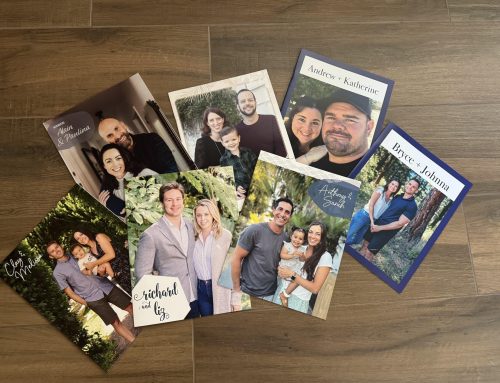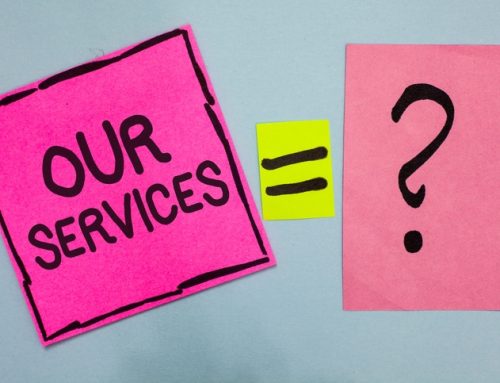
My name is Aubrey. I am a Purl Adoption Advisor as well as a white adoptive mother to three wonderful Black children. Having spent endless hours reading articles from transracial adoptees and adoptive parents, psychology studies and opinions from a range of qualified people, one quote seemed to sum it up: “love is not enough”. Your child may feel loved, while also feeling lost, insecure, and a lack self-worth. Providing racial mirrors for your transracially adopted child can build a bridge to their racial identity. Listening to the voices of adult transracial adoptees and learning from what they have to say is extremely important as an adoptive parent. We have shared advice from a transracial adoptee on this topic in the past on our blog here, and we encourage adoptive parents to listen closely to those voices. But I do sometimes think it helps to hear experience from other adoptive parents who have been through this, to help you determine if this is something you can do, and whether you can do it the right way for your future child. It takes education, sacrifices, and getting yourself out of your comfort zone to do what is best for your child. A recent viral video of young Black girls seeing a trailer for Disney’s new live-action Little Mermaid and becoming overjoyed when they realize that the main character, Ariel (played by Halle Bailey), is in fact, Black, has brought up a lot of conversations about racial mirrors and their importance in the development of young children. While this is hardly a conversation unique to transracial adoptive parents, a consciousness of its critical role in both the short- and long-term social development and personal confidence the child will exude when pursuing their dreams is very real.
In this post, I am going to discuss: what are racial mirrors, why they are so important, and where can I start?
What Are Racial Mirrors?
Having read many definitions of ‘Racial Mirror’ I feel Adoption.org nailed it when they defined it as ‘essentially people of the same ethnicity as you; they would serve as a “mirror” into what it’s like to not only be a part of that ethnic group but hopefully also serve as a mentor to help understand how to relate to the ethnic community at large.’ It is also noteworthy that the phrase ‘racial mirror’ is most prevalently used in the adoption community. When we read of racial mirrors, the first thing that we see is Halle Bailey playing Little Mermaid or Barrack Obama breaking the White House color barrier. Those are such important things at a macro level, and the underlying impressions they can leave on children of color are unquestioned; these, however, are not the only racial mirrors a child can have and in my opinion, they aren’t the most consequential racial mirrors a child should have in their life. According to a 2017 study cited on Americanadoptions.com Transracial Adoption accounts for 44% of the domestic adoptions and climbing (a number that is likely significantly higher now), the majority being white families adopting children of color. Before adopting, parents should research to better understand the diversity of their local school system. School friends, teachers, and administrators play an extremely important role in a child’s day-to-day life where racial mirrors can be the most impactful. Don’t get me wrong, I can be a great social mirror in a lot of ways, myself as a woman working in adoption, a field I love, as a caring mother, and even how I interact with my husband, etc., but I can never be a racial mirror for my child. While it can be frustrating and at times make you feel inadequate or helpless, it’s just the opposite, it is self-aware and the starting point to an even more healthy home environment and knowing you can do as much as you possibly can for your child.
Why Are Racial Mirrors So Important?
Racial mirrors provide so many benefits, but for the purpose of this blog post I will discuss what I believe to be the most important two, feeling comfortable in their own skin and as part of their ethnic community and the expansion of the child’s imagination of their capabilities and possibilities. All too often we hear stories from transracial adoptees of their younger selves using the terribly sad phrase when spending time with other children of their race, ‘they’re going to think (or worst ‘know’) I’m not really Black (or fill-in child’s race here)’, this disconnection with their community is not only inaccurate but also damaging to the child’s identity and sense of self that is so important. People in the child’s environment that reflects as racial mirrors, can help give the child the confidence that they do belong with other people that look like them and create a connection versus a mental barrier with their culture. With over 100 million people expected to have taken some sort of ancestry DNA test in the United States by 2024 to learn where they came from hundreds of years ago, it’s quite clear that wanting to connect to one’s roots and culture is very natural, and we must understand that it is something an adopted child will feel too.
Children’s imaginations are wonderful and as they grow, they begin to imagine themselves in their future self and who they could become; it’s not uncommon for children to limit their imagination and dreams based on the options they see around them. If a young person sees every school teacher as White, they may think that may not be a suitable profession for them. A great example is Golf, a sport that has traditionally been a White-dominant sport, but after the arrival of Tiger Woods the popularity of the sport exploded in children and younger people of color. Why? Because these kids saw someone that looked like them being successful, and they believed they could too. In fact, a study that Johns Hopkins University published in 2017, states that children with 2 or more Black teachers are 32% more likely to go to college (Link to Johns Hopkins article here), with the belief that seeing educated Black professionals outside of the home for even a short part of their adolescent life, can have a lifetime of impact on children of color.
Where Do I Start?
Regardless of where you are in your adoption journey, whether you have just begun and decided a transracial adoption could be right for your family, or if you’ve already adopted transracially and you’re navigating the wild journey of parenthood, you should be keeping the importance of racial mirrors in mind. If you are White, and plan to adopt or have already adopted a child of color, living in a diverse area is so incredibly important. If you don’t already, start building a network of diverse friends early, research diverse schools, neighborhoods, and churches. Find after school activities led by people that can be a racial mirror to your child. Don’t be afraid to drive a little further for soccer or dance, if that means the class your child is in may allow them to see not only racial mirrors in teachers but also other children that look like them that they can build connections to.
I started this blog with a quote “Love is not enough” and where it is true, love is so important. It’s also important to read culturally appropriate books, watch shows with racially reflective main characters, and have toys and dolls that reflect the child’s ethnicity, but as important as they are none of these things can replace interactive and personal connections with racial mirrors in a child’s life.
Other resources on this topic:
- What to Know About Parenting Transracial Adoptees
- Adoption Preferences In Your Journey
- Be the Bridge Podcast
- Positive Practices in Transracial Adoption Parenting
- It is not about you, and you will likely be uncomfortable
Transracial adoption is just one of the areas we cover with prospective adoptive parents interested in working with Purl in their adoption journey. Transracial adoption is not the right route for many prospective adoptive families, and that’s okay. As always, we believe prospective adoptive parents need to center what would be best for their future child. Ask themselves if they have what it takes, and are willing to take the extra effort it will take to parent a child of a different ethnicity or race? Are they willing and able to make the sacrifices, do they have the right environment/family for a child of a different race/ethnicity? It is okay if the answer is no. But if it is yes, we will help provide resources for families to learn more about this area and do better for their child. To learn more about Purl’s services and to schedule a free consultation, click here.

My name is Aubrey. I am a Purl Adoption Advisor as well as a white adoptive mother to three wonderful Black children. Having spent endless hours reading articles from transracial adoptees and adoptive parents, psychology studies and opinions from a range of qualified people, one quote seemed to sum it up: “love is not enough”. Your child may feel loved, while also feeling lost, insecure, and a lack self-worth. Providing racial mirrors for your transracially adopted child can build a bridge to their racial identity. Listening to the voices of adult transracial adoptees and learning from what they have to say is extremely important as an adoptive parent. We have shared advice from a transracial adoptee on this topic in the past on our blog here, and we encourage adoptive parents to listen closely to those voices. But I do sometimes think it helps to hear experience from other adoptive parents who have been through this, to help you determine if this is something you can do, and whether you can do it the right way for your future child. It takes education, sacrifices, and getting yourself out of your comfort zone to do what is best for your child. A recent viral video of young Black girls seeing a trailer for Disney’s new live-action Little Mermaid and becoming overjoyed when they realize that the main character, Ariel (played by Halle Bailey), is in fact, Black, has brought up a lot of conversations about racial mirrors and their importance in the development of young children. While this is hardly a conversation unique to transracial adoptive parents, a consciousness of its critical role in both the short- and long-term social development and personal confidence the child will exude when pursuing their dreams is very real.
In this post, I am going to discuss: what are racial mirrors, why they are so important, and where can I start?
What Are Racial Mirrors?
Having read many definitions of ‘Racial Mirror’ I feel Adoption.org nailed it when they defined it as ‘essentially people of the same ethnicity as you; they would serve as a “mirror” into what it’s like to not only be a part of that ethnic group but hopefully also serve as a mentor to help understand how to relate to the ethnic community at large.’ It is also noteworthy that the phrase ‘racial mirror’ is most prevalently used in the adoption community. When we read of racial mirrors, the first thing that we see is Halle Bailey playing Little Mermaid or Barrack Obama breaking the White House color barrier. Those are such important things at a macro level, and the underlying impressions they can leave on children of color are unquestioned; these, however, are not the only racial mirrors a child can have and in my opinion, they aren’t the most consequential racial mirrors a child should have in their life. According to a 2017 study cited on Americanadoptions.com Transracial Adoption accounts for 44% of the domestic adoptions and climbing (a number that is likely significantly higher now), the majority being white families adopting children of color. Before adopting, parents should research to better understand the diversity of their local school system. School friends, teachers, and administrators play an extremely important role in a child’s day-to-day life where racial mirrors can be the most impactful. Don’t get me wrong, I can be a great social mirror in a lot of ways, myself as a woman working in adoption, a field I love, as a caring mother, and even how I interact with my husband, etc., but I can never be a racial mirror for my child. While it can be frustrating and at times make you feel inadequate or helpless, it’s just the opposite, it is self-aware and the starting point to an even more healthy home environment and knowing you can do as much as you possibly can for your child.
Why Are Racial Mirrors So Important?
Racial mirrors provide so many benefits, but for the purpose of this blog post I will discuss what I believe to be the most important two, feeling comfortable in their own skin and as part of their ethnic community and the expansion of the child’s imagination of their capabilities and possibilities. All too often we hear stories from transracial adoptees of their younger selves using the terribly sad phrase when spending time with other children of their race, ‘they’re going to think (or worst ‘know’) I’m not really Black (or fill-in child’s race here)’, this disconnection with their community is not only inaccurate but also damaging to the child’s identity and sense of self that is so important. People in the child’s environment that reflects as racial mirrors, can help give the child the confidence that they do belong with other people that look like them and create a connection versus a mental barrier with their culture. With over 100 million people expected to have taken some sort of ancestry DNA test in the United States by 2024 to learn where they came from hundreds of years ago, it’s quite clear that wanting to connect to one’s roots and culture is very natural, and we must understand that it is something an adopted child will feel too.
Children’s imaginations are wonderful and as they grow, they begin to imagine themselves in their future self and who they could become; it’s not uncommon for children to limit their imagination and dreams based on the options they see around them. If a young person sees every school teacher as White, they may think that may not be a suitable profession for them. A great example is Golf, a sport that has traditionally been a White-dominant sport, but after the arrival of Tiger Woods the popularity of the sport exploded in children and younger people of color. Why? Because these kids saw someone that looked like them being successful, and they believed they could too. In fact, a study that Johns Hopkins University published in 2017, states that children with 2 or more Black teachers are 32% more likely to go to college (Link to Johns Hopkins article here), with the belief that seeing educated Black professionals outside of the home for even a short part of their adolescent life, can have a lifetime of impact on children of color.
Where Do I Start?
Regardless of where you are in your adoption journey, whether you have just begun and decided a transracial adoption could be right for your family, or if you’ve already adopted transracially and you’re navigating the wild journey of parenthood, you should be keeping the importance of racial mirrors in mind. If you are White, and plan to adopt or have already adopted a child of color, living in a diverse area is so incredibly important. If you don’t already, start building a network of diverse friends early, research diverse schools, neighborhoods, and churches. Find after school activities led by people that can be a racial mirror to your child. Don’t be afraid to drive a little further for soccer or dance, if that means the class your child is in may allow them to see not only racial mirrors in teachers but also other children that look like them that they can build connections to.
I started this blog with a quote “Love is not enough” and where it is true, love is so important. It’s also important to read culturally appropriate books, watch shows with racially reflective main characters, and have toys and dolls that reflect the child’s ethnicity, but as important as they are none of these things can replace interactive and personal connections with racial mirrors in a child’s life.
Other resources on this topic:
- What to Know About Parenting Transracial Adoptees
- Adoption Preferences In Your Journey
- Be the Bridge Podcast
- Positive Practices in Transracial Adoption Parenting
- It is not about you, and you will likely be uncomfortable
Transracial adoption is just one of the areas we cover with prospective adoptive parents interested in working with Purl in their adoption journey. Transracial adoption is not the right route for many prospective adoptive families, and that’s okay. As always, we believe prospective adoptive parents need to center what would be best for their future child. Ask themselves if they have what it takes, and are willing to take the extra effort it will take to parent a child of a different ethnicity or race? Are they willing and able to make the sacrifices, do they have the right environment/family for a child of a different race/ethnicity? It is okay if the answer is no. But if it is yes, we will help provide resources for families to learn more about this area and do better for their child. To learn more about Purl’s services and to schedule a free consultation, click here.



